|
3. Thymelicus acteon (Rottemburg, 1775) / Lulworth skipper / Hesperiidae – Hesperiinae
NL: dwergdikkopje, gevlekt dikkopje / D: Gescheckter Dickkopffalter, Mattscheckiger Braun-Dickkopffalter / F: hespérie du chiendents, l’hespérie actéon
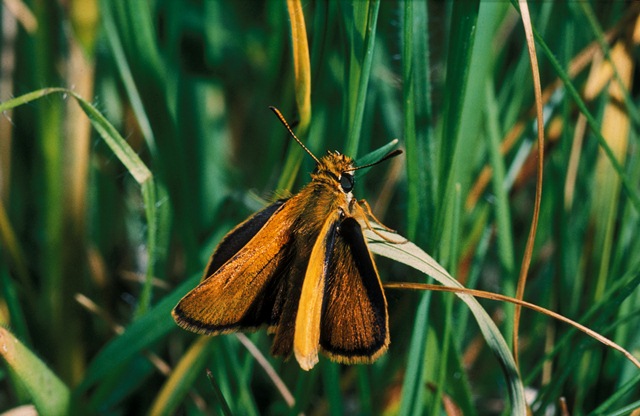 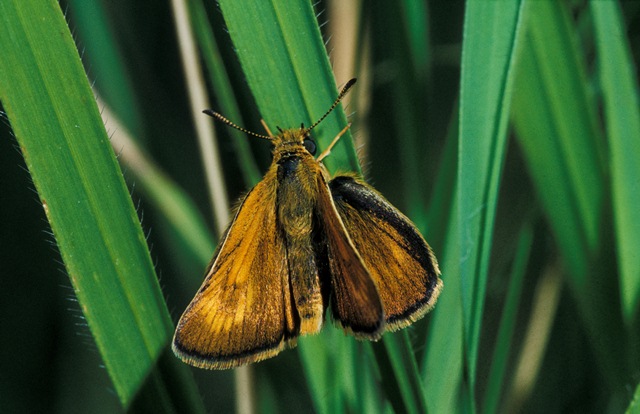 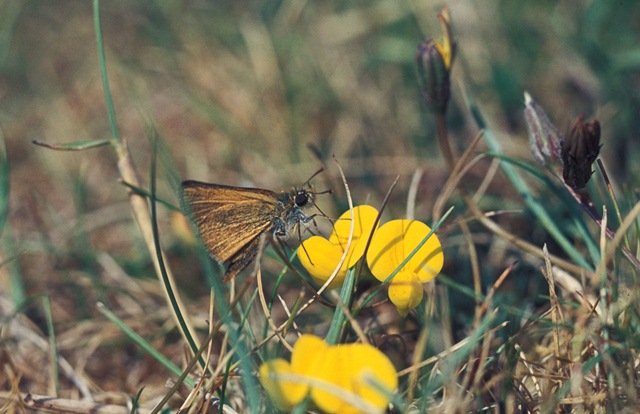
Photographs: Frits Bink ©.
Very small, wing length 12 (10-13) mm. In northwest Europe, this Thymelicus species occurs only in tall grass in warm places. It reached its northern limit at the coastal area of southwest England and previously also in the Netherlands at South-Limburg. Now it occurs only locally in Luxemburg and Wallonia, in Benelux, on chalk grassland (in Brittany, France, also in saltmarshes).
Adult is on the wing from early-July until mid-August and peaks end-July. The species is known from maritime and mild continental climate, amplitude range 6 to 13; requires a heat sum of 900°d and tolerates up to 2300°d. The corresponding climate windows are 29 weeks up to a whole year.
This tiny skipper has been known since 1832 from Dorset, England, where it occurs on the chalk cliffs grazed by cattle (Asher et al. 2001: 64-67).
Survival of the population depends mainly on tussocks of tall grass for overwintering.
Ecological characteristics
Behaviour over time
Overwintering: newly hatched larva in a tiny silken cocoon, in the shelter of a folded and withered leave.
Reproduction: oviposition starts after 8-11 days when there about 48 mature eggs in the body. The estimated potential egg production is about 2.5 times higher.
Larval feeding periods: 11-12 weeks from early April until end June.
Generations: always one.
Spreading of risk: not observed.
Life cycle: egg about 23 days; larva 45 weeks; pupa about 15 days.
Life span of adult: rather long, 3 weeks.
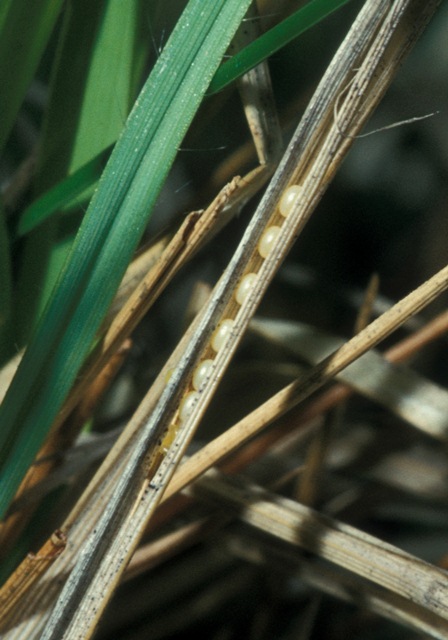 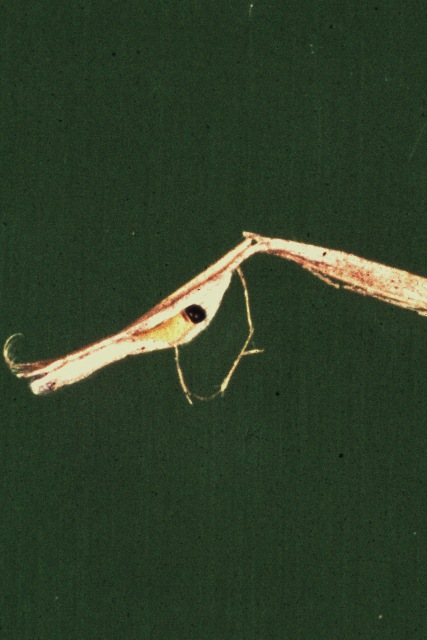
Photographs: Frits Bink ©.
Behaviour in space
From stay-at-home to migrant: stay-at-home, spatial requirement very modest.
Finding a mate: the sexes meet each other on places rich in flowers where they nectar together on knapweed or thistle.
Orientation in the landscape: edges between short and tall grass vegetation in an open landscape.
Oviposition: a number of eggs together into the sheath of a withered leaf. The female has a wedge like ovipositor for this purpose, a typical feature of all Thymelicus species.
Defence
Threats from other organisms: the larva lives hidden in a tube of enrolled grass blade.
Threats from the environment: the butterfly is rather tolerant to heat and drought, the larvae are able to survive in coastal saltmarshes where it risks sometimes being submerged.
Feeding habits
Adult: nectar of all kind of flowers, e.g. bird’s-foot trefoil, knapweed, thistle.
Larva: construct a tube of a grass blade and eat the upper part, when it is nearly full-grown it lives freely on the leaves.
Larval foodplants
Plant species: Poaceae; tall grasses like Brachypodium pinnatum, Bromus erectus, Elymus repens.
Journal
Rearing experiments based on specimens from Blankenheim, Germany, a chalk grass land in the Eifel (Two females supplied by Wim Geraedts 14 August 1982):
15 August 1982: eggs in the enrolled withered leaf of the grass.
16 August: one butterfly died, only two eggs left in the body
22 September: cocoons found in the same grass tussock, hidden in the folded grass blade. Larva repaired its cocoon soon after it was damaged.
Overwintered in fridge at about -8°C
13 March 1983: taken indoors.
24 March: first sign of feeding noticed.
3 April: 3 larvae end first instar.
8 May: larvae 6 mm in length.
23 May: larvae up to now still living within enrolled leaves.
5 June: biggest larva full grown, larvae are free living.
9 June: first pupa, a girdled pupa in a tent.
24 June: first adult, a male.
2 July: next butterfly a female, there were no eggs in the body but a mass of fat.
Table 3-1. Results of dissections

Table 3-2. Collection and observation localities
D, Lorch 300m, 50° 02’ 05”N – 7° 47’ 56”E; 31 July 1985.
F, Brittany, Ambon 47° 33’ 17”N – 2° 34’ 11”W; 28 July 1981.
F, Montmédy 217 m, 49° 31’ 07”N – 5° 21’ 33” E; 18-8-84, 20 August 1984.
F, Vosges, Bollenberg 363 m, 47° 56’ 54”N – 7° 15’ 21”E; 25 July 1983.
F, Vosges, le Zinnkoepfle 481 m, 47° 57’ 56”N – 7° 15’ 08”E; 10 July 1984, 22 August 1984.
Fig. 3-1. Thymelicus acteon, phenogram adapted from Fichefet et al. 2008: 57.
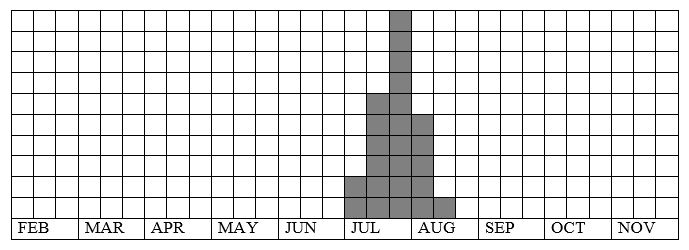
Fig. 3-2. Thymelicus acteon, habitat characteristics.
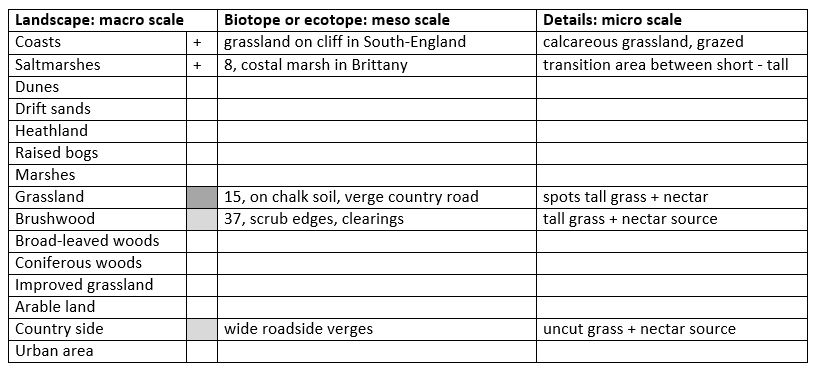
Fig. 3-3. Thymelicus acteon, climate matrix, heat-sums 900 - 2300°d.
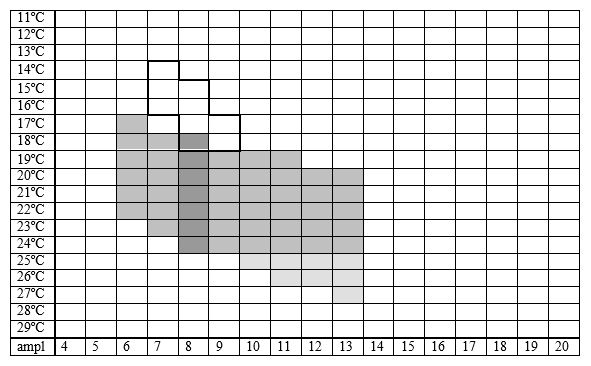
|










